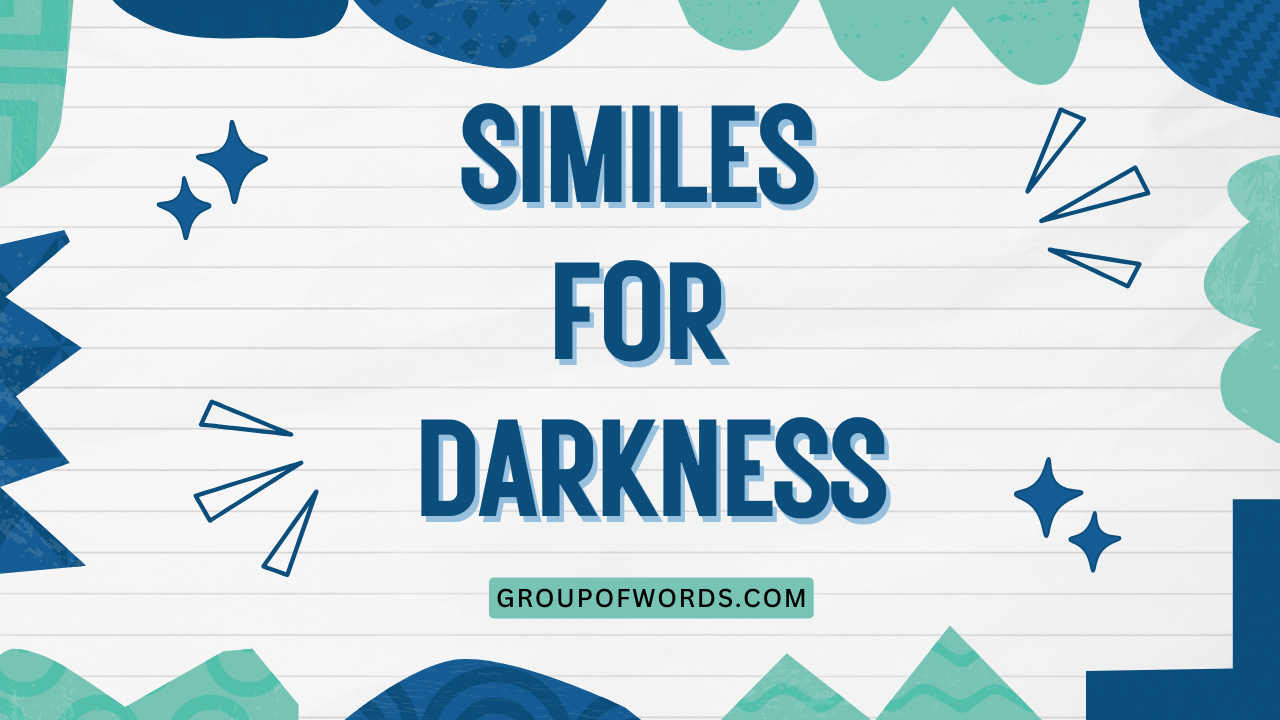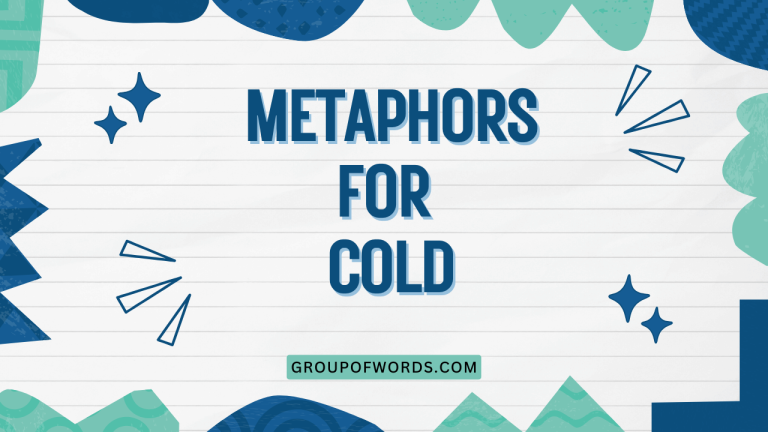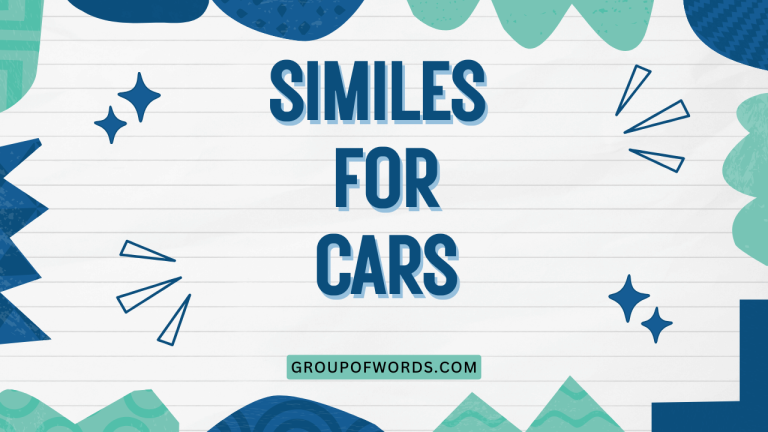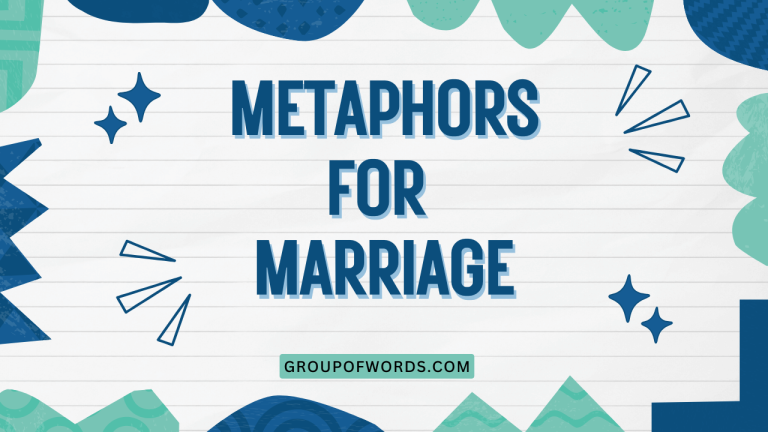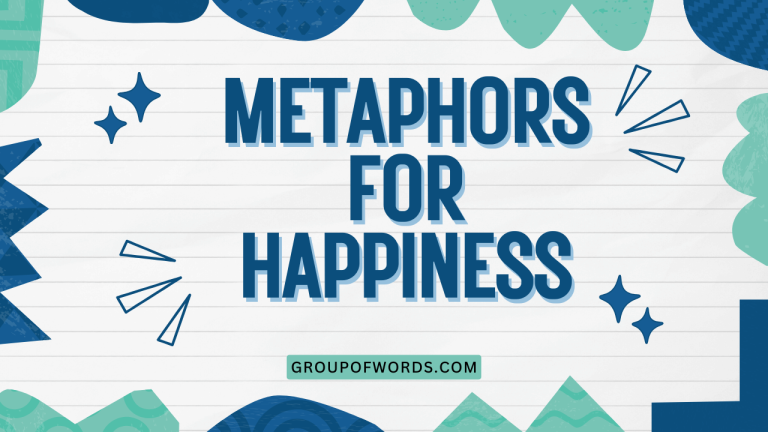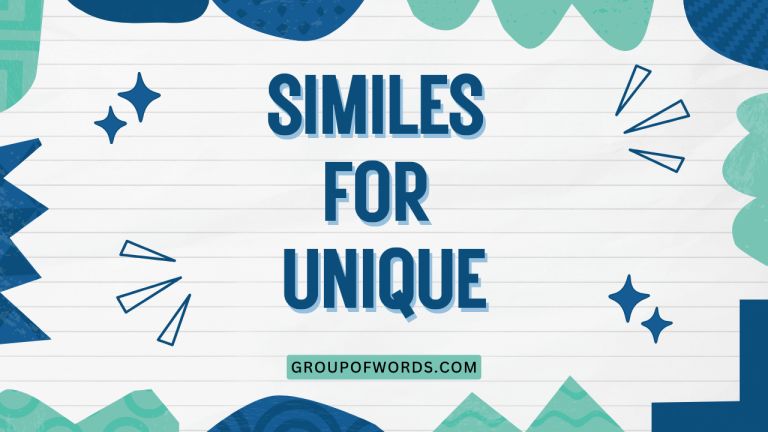Similes for Darkness: Illuminating Figurative Language
Understanding similes is crucial for enhancing your descriptive writing and comprehension skills. Similes, which compare two unlike things using “like” or “as,” are particularly effective in evoking vivid imagery and conveying deeper meaning.
This article focuses specifically on similes for darkness, exploring how they can be used to paint compelling pictures of shadows, night, and obscurity. Whether you’re a student, writer, or simply an English enthusiast, this comprehensive guide will equip you with the knowledge and tools to master the art of using similes to describe darkness.
This article will benefit anyone looking to improve their creative writing, poetry, or overall understanding of figurative language. By delving into numerous examples, structural breakdowns, and practical exercises, you’ll gain a solid grasp of how to effectively utilize similes to capture the essence of darkness in your writing.
Table of Contents
- Introduction
- Definition of Simile
- Structural Breakdown of Similes Describing Darkness
- Types of Darkness and Corresponding Similes
- Examples of Similes for Darkness
- Usage Rules for Similes
- Common Mistakes When Using Similes
- Practice Exercises
- Advanced Topics in Simile Usage
- Frequently Asked Questions
- Conclusion
Definition of Simile
A simile is a figure of speech that compares two unlike things using the words “like” or “as.” The purpose of a simile is to create a vivid image or convey a deeper meaning by drawing a connection between the two seemingly unrelated subjects. It enhances descriptive writing and helps readers understand abstract concepts by relating them to something familiar.
Classification
Similes are classified as a type of figurative language, specifically under the umbrella of comparison. They are distinct from metaphors, which directly equate two things without using “like” or “as.” For example, “He is a lion” is a metaphor, while “He is like a lion” is a simile.
Function
The primary function of a simile is to enhance understanding and create vivid imagery. By comparing something unfamiliar to something familiar, similes can make abstract concepts more concrete and relatable.
In the context of describing darkness, similes can help readers imagine the intensity, texture, and emotional impact of the darkness.
Contexts
Similes are used extensively in various forms of literature, including poetry, prose, and drama. They are also common in everyday speech, adding color and expressiveness to communication.
When describing darkness, similes can be used in settings ranging from realistic fiction to fantasy, horror, and even scientific writing where the absence of light needs to be conveyed precisely.
Structural Breakdown of Similes Describing Darkness
A simile for darkness typically follows this structure:
Subject (Darkness) + Linking Word (like/as) + Object of Comparison + (Optional) Qualifying Phrase
For instance:
- The darkness was like a thick blanket.
- The night was as black as coal.
- The shadows stretched like long fingers across the floor.
The subject is the darkness itself, the linking word is either “like” or “as,” and the object of comparison is something that shares a quality with the darkness, such as a blanket, coal, or fingers. The qualifying phrase adds further detail, enhancing the comparison and making it more specific.
Types of Darkness and Corresponding Similes
Darkness isn’t monolithic; it has nuances and variations. Understanding these types allows for more precise and impactful similes.
Absolute Darkness
This refers to complete absence of light. Similes for absolute darkness often evoke feelings of disorientation, confinement, or even fear.
Partial Darkness
This describes situations where there’s some light, but it’s subdued or limited. Similes here might focus on the interplay between light and shadow, or the feeling of being partially obscured.
Ominous Darkness
This type of darkness carries a sense of foreboding or impending danger. Similes used here aim to create suspense and unease in the reader.
Peaceful Darkness
In contrast to ominous darkness, peaceful darkness can be comforting and serene. Similes for this type of darkness often evoke feelings of tranquility and rest.
Examples of Similes for Darkness
Below are several examples of similes describing darkness, broken down into categories to help you understand how to use them effectively. Each category explores a different aspect or feeling associated with darkness.
General Darkness
These similes describe darkness in a broad sense, without necessarily focusing on a specific emotion or setting.
The following table contains 30 examples of similes for general darkness.
| Simile | Explanation |
|---|---|
| The darkness was like a heavy curtain drawn across the world. | Emphasizes the all-encompassing nature of the darkness. |
| The room was as dark as a coal mine. | Uses a well-known image to convey deep darkness. |
| The darkness felt like a velvet cloak. | Highlights the texture and enveloping quality of the darkness. |
| The night was as black as ink. | A classic simile emphasizing the depth of the darkness. |
| The darkness was like being submerged in a silent ocean. | Evokes a feeling of isolation and depth. |
| The shadows stretched like long, grasping fingers. | Personifies the shadows, making them seem threatening. |
| The alley was as dark as the inside of a tomb. | Creates a sense of confinement and death. |
| The darkness clung to him like a second skin. | Suggests that the darkness is inescapable. |
| The forest was as dark as a dream. | Implies a sense of mystery and unreality. |
| The darkness descended like a shroud. | Elicits a feeling of impending doom. |
| The cave was as dark as the abyss. | Emphasizes the vastness and impenetrability of the darkness. |
| The darkness was like a comforting blanket. | In contrast to other examples, this suggests a feeling of safety. |
| The room was as dark as if the sun had died. | Emphasizes the totality of the darkness. |
| The shadows danced like mischievous spirits. | Personifies the shadows, giving them a playful yet unsettling quality. |
| The night was as black as a raven’s wing. | Uses a striking image to convey the darkness. |
| The darkness was like a deep, still lake. | Evokes a sense of calmness and depth. |
| The tunnel was as dark as the belly of a whale. | Creates a feeling of confinement and unease. |
| The darkness settled like a thick fog. | Highlights the density and pervasive nature of the darkness. |
| The room was as dark as a photographer’s darkroom. | Uses a specific reference to convey the absence of light. |
| The shadows crept like silent predators. | Personifies the shadows, making them seem threatening. |
| The night was as black as space itself. | Emphasizes the vastness and emptiness of the darkness. |
| The darkness was like a heavy weight on his chest. | Suggests a feeling of oppression and despair. |
| The cave was as dark as the inside of a closed eye. | Evokes a feeling of introspection and isolation. |
| The shadows flickered like dying embers. | Highlights the fragility and impermanence of the light. |
| The night was as black as the devil’s heart. | Creates a sense of evil and foreboding. |
| The darkness was like a prison. | Implies a feeling of confinement and hopelessness. |
| The tunnel was as dark as a bottomless pit. | Emphasizes the depth and impenetrability of the darkness. |
| The darkness enveloped him like a lover’s embrace. | Suggests a feeling of comfort and surrender. |
| The room was as dark as a moonless night. | Uses a common image to convey the absence of light. |
| The shadows danced like puppets on a string. | Personifies the shadows, giving them a sense of artificiality. |
Night-Time Darkness
These similes specifically relate to the darkness of night, often incorporating elements like stars, moon, or nocturnal sounds.
The following table contains 25 examples of similes that describe darkness at night.
| Simile | Explanation |
|---|---|
| The night was as dark as a starless sky. | Emphasizes the absence of light from celestial bodies. |
| The darkness of the night was like a deep, silent ocean. | Conveys the vastness and tranquility of the night. |
| The night was as black as velvet, punctuated by the diamond dust of stars. | Contrasts the darkness with the subtle sparkle of stars. |
| The darkness wrapped around the town like a protective blanket. | Suggests a feeling of safety and security. |
| The night was as dark as the inside of a wolf’s mouth. | Evokes a feeling of danger and wildness. |
| The shadows of the trees stretched like skeletal fingers in the moonlight. | Creates a spooky and unsettling image. |
| The night was as dark as if someone had turned off the world. | Emphasizes the suddenness and completeness of the darkness. |
| The darkness of the night was like a canvas for the stars. | Highlights the beauty and potential of the night. |
| The night was as black as a witch’s cauldron. | Creates a sense of mystery and magic. |
| The darkness crept in like a thief in the night. | Personifies the darkness, making it seem stealthy and menacing. |
| The night was as dark as a dream you can’t quite remember. | Implies a sense of mystery and elusiveness. |
| The shadows danced in the moonlight like playful spirits. | Personifies the shadows, giving them a whimsical quality. |
| The night was as dark as the bottom of a well. | Emphasizes the depth and obscurity of the darkness. |
| The darkness of the night was like a balm for the soul. | Suggests a feeling of peace and healing. |
| The night was as black as a cat’s fur. | Uses a familiar image to convey the darkness. |
| The shadows lengthened like the secrets of the night. | Personifies the shadows, linking them to hidden things. |
| The night was as dark as if the moon had forgotten to rise. | Emphasizes the absence of moonlight. |
| The darkness of the night was like a stage for nocturnal creatures. | Highlights the activity and life that occurs at night. |
| The night was as black as tar. | A simple and direct comparison emphasizing the thickness and density of the darkness. |
| The darkness was as thick as molasses, swallowing the stars one by one. | A vivid simile that emphasizes the density and all-consuming nature of the darkness, with a touch of personification as it “swallows” the stars. |
| The night was as silent as a tomb, broken only by the occasional hoot of an owl. | This simile combines the darkness with the silence, creating a sense of isolation and foreboding, with the owl’s hoot providing a stark contrast. |
| The darkness felt like a heavy blanket, stifling the last embers of daylight. | A tactile simile that emphasizes the oppressive feeling of the darkness, as if it is suffocating the remaining light. |
| The night was as empty as a forgotten promise, devoid of light and hope. | This simile connects the darkness with a sense of loss and despair, suggesting that the night is not just dark but also emotionally barren. |
| The shadows stretched and twisted like the limbs of ancient trees, clawing at the edges of the moonlight. | This simile uses vivid imagery to depict the shadows as menacing and alive, creating a sense of unease and foreboding. |
| The darkness was as deep as the ocean floor, hiding secrets that had been buried for centuries. | This simile emphasizes the mysterious and unknown aspects of the darkness, suggesting that it holds hidden depths and untold stories. |
Emotional Darkness (Despair, Fear)
These similes use darkness to represent negative emotions like despair, fear, or sadness.
Here are 20 examples of similes describing emotional darkness:
| Simile | Explanation |
|---|---|
| His despair was like a dark cloud hanging over him. | Represents sadness as a heavy, oppressive force. |
| Her fear was as dark as the deepest night. | Emphasizes the intensity and all-consuming nature of her fear. |
| His sadness was like a shadow that followed him everywhere. | Suggests that his sadness is inescapable. |
| Her depression was as black as a bottomless pit. | Emphasizes the depth and hopelessness of her depression. |
| His anger was like a dark storm brewing inside him. | Represents his anger as a powerful and destructive force. |
| Her loneliness was as dark as an empty room. | Emphasizes the feeling of isolation and emptiness. |
| His grief was like a heavy shroud of darkness. | Represents his grief as a suffocating and oppressive force. |
| Her anxiety was as dark as a maze with no exit. | Emphasizes the feeling of being trapped and lost. |
| His guilt was like a dark stain on his soul. | Represents his guilt as a permanent and damaging mark. |
| Her regret was as black as a burned-out fire. | Emphasizes the feeling of loss and finality. |
| His sorrow was as deep as a mine shaft, swallowing all light. | This simile uses the image of a mine shaft to convey the depth of his sorrow, suggesting that it is a dark and consuming force. |
| Her heart was as dark as a moonless night, devoid of joy and hope. | This simile describes her heart as being completely empty and devoid of positive emotions, emphasizing the depth of her sadness. |
| His memories were like shadows that haunted him, growing darker with each passing day. | This simile uses the image of shadows to represent his memories, suggesting that they are a constant and oppressive presence in his life. |
| Her fear was as cold as a tomb, chilling her to the bone. | This simile combines the darkness with the coldness of a tomb to emphasize the intensity of her fear. |
| His soul was as dark as a starless sky, lost in the vastness of despair. | This simile uses the image of a starless sky to convey the depth of his despair, suggesting that he is lost and alone. |
| Her thoughts were like shadows that danced in her mind, twisting and distorting reality. | This simile uses the image of dancing shadows to represent her thoughts, suggesting that they are chaotic and unsettling. |
| His future was as dark as a tunnel with no end, filled with uncertainty and dread. | This simile uses the image of a tunnel to represent his future, suggesting that it is bleak and without hope. |
| Her spirit was as dark as a raven’s wing, weighed down by sorrow and regret. | This simile uses the image of a raven’s wing to convey the heaviness of her sorrow and regret, suggesting that they are a burden she carries with her. |
| His life was as dark as a prison cell, confined by the walls of his own making. | This simile uses the image of a prison cell to represent his life, suggesting that he is trapped and unable to escape. |
| Her world was as dark as if the sun had forgotten to rise, leaving her lost in a perpetual night. | This simile uses the image of a sunless world to convey the depth of her despair, suggesting that she is completely lost and without hope. |
Supernatural Darkness
These similes evoke a sense of the uncanny, often used in fantasy or horror settings.
Here are 20 examples of similes describing supernatural darkness:
| Simile | Explanation |
|---|---|
| The darkness was like a living thing, watching them from the shadows. | Personifies the darkness, giving it a sinister presence. |
| The shadows twisted like demons in the firelight. | Creates a disturbing and unsettling image. |
| The darkness was as thick as a witch’s spell. | Emphasizes the magical and malevolent nature of the darkness. |
| The air grew heavy, like the breath of a phantom. | Creates a spooky and ethereal atmosphere. |
| The darkness was like a gateway to another world. | Suggests that the darkness is a portal to something unknown and potentially dangerous. |
| The shadows danced like restless spirits. | Personifies the shadows, giving them a ghostly quality. |
| The darkness was as cold as a vampire’s touch. | Emphasizes the chilling and unnatural nature of the darkness. |
| The forest was as dark as the heart of a forgotten god. | Creates a sense of ancient and powerful evil. |
| The darkness pulsed like a heartbeat, filled with unseen energy. | Personifies the darkness, giving it a sense of life and power. |
| The shadows whispered secrets in the darkness. | Personifies the shadows, making them seem mysterious and knowing. |
| The darkness was as impenetrable as a fortress built by ancient sorcerers. | This simile uses the image of a sorcerer-built fortress to emphasize the strength and impenetrability of the darkness, suggesting that it is a powerful and magical force. |
| The shadows writhed like restless souls, trapped between worlds. | This simile uses the image of restless souls to represent the shadows, suggesting that they are tormented and unable to find peace. |
| The air crackled with unseen energy, as if the darkness itself was alive. | This simile personifies the darkness, giving it a sense of life and power, and suggesting that it is a conscious and malevolent force. |
| The silence was as thick as a shroud, broken only by the whispers of unseen entities. | This simile combines the darkness with the silence to create a sense of unease and foreboding, suggesting that the air is filled with supernatural presence. |
| The darkness felt like a physical weight, pressing down on them with the force of a thousand nightmares. | This simile uses the image of nightmares to emphasize the oppressive and terrifying nature of the darkness. |
| The shadows stretched and contorted like the limbs of demons, reaching out to claim their souls. | This simile uses the image of demons to represent the shadows, suggesting that they are evil and dangerous. |
| The darkness was as deep as the abyss, filled with the echoes of forgotten screams. | This simile uses the image of the abyss to convey the depth and terror of the darkness, suggesting that it is a place of suffering and despair. |
| The air shimmered with an unholy light, as if the darkness itself was radiating evil. | This simile uses the image of an unholy light to emphasize the malevolent nature of the darkness, suggesting that it is a source of corruption and evil. |
| The silence was as heavy as a tombstone, broken only by the rustling of unseen wings. | This simile combines the darkness with the silence to create a sense of dread and foreboding, suggesting that something sinister is lurking nearby. |
| The darkness whispered promises of power and immortality, tempting them to embrace the shadows. | This simile personifies the darkness, giving it a voice and a seductive quality, suggesting that it is a tempting but dangerous force. |
Usage Rules for Similes
While similes are a powerful tool, it’s essential to use them correctly to avoid clichés and ensure clarity.
Clarity and Relevance
The comparison should be clear and relevant to the context. The reader should easily understand the connection between the two things being compared.
Avoid comparisons that are too obscure or confusing.
Avoiding Clichés
Overused similes, such as “as black as night,” can weaken your writing. Strive for originality by finding fresh and unexpected comparisons.
Think about unique qualities of darkness that you can highlight with a novel simile.
Contextual Appropriateness
The simile should fit the tone and style of your writing. A humorous simile might be inappropriate in a serious or somber context.
Consider the overall mood you’re trying to create and choose your similes accordingly.
Common Mistakes When Using Similes
One common mistake is confusing similes with metaphors. Remember that similes use “like” or “as,” while metaphors directly equate two things.
Another error is using weak or ineffective comparisons. The object of comparison should have a strong connection to the subject being described.
Here’s a table illustrating common mistakes and corrections:
| Incorrect | Correct | Explanation |
|---|---|---|
| The darkness was like dark. | The darkness was like a heavy blanket. | The first example is redundant; the second offers a meaningful comparison. |
| The night was as black as… something. | The night was as black as coal. | The first example lacks a specific object of comparison. |
| He was darkness. | He was like darkness personified. | The first example is a metaphor, not a simile. The second correctly uses “like.” |
Practice Exercises
Test your understanding of similes for darkness with these exercises.
Exercise 1: Completing the Simile
Complete the following similes with an appropriate object of comparison.
- The darkness was like ____________.
- The night was as black as ____________.
- The shadows stretched like ____________.
- The room was as dark as ____________.
- The darkness felt like ____________.
- His despair was like ____________.
- Her fear was as dark as ____________.
- The forest was as dark as ____________.
- The darkness pulsed like ____________.
- The air grew heavy, like ____________.
Answer Key:
- The darkness was like a heavy curtain.
- The night was as black as ink.
- The shadows stretched like long fingers.
- The room was as dark as a cave.
- The darkness felt like velvet.
- His despair was like a dark cloud.
- Her fear was as dark as the abyss.
- The forest was as dark as a dream.
- The darkness pulsed like a heartbeat.
- The air grew heavy, like the breath of a phantom.
Exercise 2: Identifying Effective Similes
Which of the following is the most effective simile for describing darkness?
- The darkness was like a thing.
- The darkness was like a black thing.
- The darkness was like a heavy, suffocating blanket.
- The darkness was dark.
Answer: 3. The darkness was like a heavy, suffocating blanket.
Explanation: Option 3 provides the most vivid and descriptive comparison, creating a clear image for the reader.
Exercise 3: Creating Your Own Similes
Create three original similes to describe each of the following:
- Ominous Darkness
- Peaceful Darkness
- Emotional Darkness (Sadness)
Sample Answers:
- Ominous Darkness:
- The darkness was like a predator stalking its prey.
- The shadows stretched like grasping claws in the dim light.
- The silence was as heavy as a tombstone, broken only by the rustling of unseen things.
- Peaceful Darkness:
- The darkness was like a soft lullaby, soothing her to sleep.
- The night was as quiet as a sleeping child.
- The shadows embraced the world like a gentle hug.
- Emotional Darkness (Sadness):
- Her sadness was like a deep well, filled with unshed tears.
- His heart was as heavy as a stone.
- The world seemed as gray as a rainy day.
Advanced Topics in Simile Usage
For advanced learners, understanding extended similes and their application in different literary forms can significantly enhance their writing skills.
Extended Similes
An extended simile is a simile that is developed over several lines or even an entire paragraph. It provides a more detailed and nuanced comparison, allowing the writer to explore the similarities between two things in greater depth.
These are often used to create a more vivid and lasting impression on the reader.
Example:
The darkness crept into the town like a silent predator, its shadows stretching and reaching like long, skeletal fingers. It enveloped the houses, swallowing them whole, until the entire town was as black as the inside of a wolf’s mouth. The wind howled like a mournful spirit, adding to the eerie atmosphere, as if the darkness itself was alive and watching.
Similes in Poetry
Similes are frequently used in poetry to create imagery and evoke emotions. Poets often use similes to compare abstract concepts to concrete objects, making their poems more accessible and relatable.
The careful selection of similes can significantly enhance the poem’s meaning and impact.
Example:
“The night descends, as dark as sorrow’s keep,
And shadows lengthen, like the trails of sleep.”
Similes in Prose
In prose, similes can be used to add depth and color to descriptions. They can help the reader visualize scenes and understand characters’ emotions more vividly.
When used sparingly and effectively, similes can elevate prose and make it more engaging.
Example:
“The forest was as dark as the inside of a whale, the thick canopy blocking out all but the faintest slivers of light. The air hung heavy with the scent of damp earth and decaying leaves, creating a sense of claustrophobia and unease. Every rustle and snap sounded like a threat, and the darkness seemed to press in on them from all sides.”
Frequently Asked Questions
- What is the difference between a simile and a metaphor?
A simile compares two things using “like” or “as,” while a metaphor directly equates them without using those words. For example, “He is like a lion” is a simile, while “He is a lion” is a metaphor.
- Why are similes useful in writing?
Similes enhance descriptive writing by creating vivid images and conveying deeper meanings. They help readers understand abstract concepts by relating them to something familiar.
- How can I avoid using clichés in my similes?
Strive for originality by finding fresh and unexpected comparisons. Think about unique qualities of the subject you’re describing and try to connect them to something less obvious.
- Can a simile be too complex?
Yes, a simile can be too complex if the comparison is too obscure or confusing. The reader should easily understand the connection between the two things being compared.
- Is it okay to use multiple similes in one paragraph?
Yes, but use them sparingly. Overusing similes can make your writing feel cluttered and distracting. Focus on quality over quantity.
- How do I choose the right object of comparison for a simile?
Choose an object that shares a quality with the subject you’re describing and that will resonate with your audience. Consider the tone and style of your writing when making your selection.
- Can similes be used in non-fiction writing?
Yes, similes can be used in non-fiction writing to make complex topics more accessible and engaging. However, use them judiciously and ensure they are appropriate for the context.
- What role does context play in the effectiveness of
simile?
Context is crucial. A simile that works well in one situation might be inappropriate in another. Consider the tone, audience, and overall message of your writing when choosing a simile.
- How can I improve my simile writing skills?
Practice regularly, read widely, and pay attention to how other writers use similes. Experiment with different comparisons and ask for feedback on your writing.
- Are there any specific types of writing where similes are more effective?
Similes are particularly effective in descriptive writing, poetry, and creative non-fiction. They can also be useful in persuasive writing to make your arguments more relatable and engaging.
Conclusion
Mastering the art of using similes for darkness can significantly enhance your writing, allowing you to paint vivid pictures and evoke powerful emotions in your readers. By understanding the structure, types, and usage rules of similes, you can avoid common mistakes and create original, impactful comparisons.
Whether you’re describing the general darkness of night, the emotional darkness of despair, or the supernatural darkness of a fantasy world, similes are a versatile tool for bringing your writing to life. Practice the exercises provided, explore different comparisons, and continue to refine your skills to become a more effective and expressive writer.
